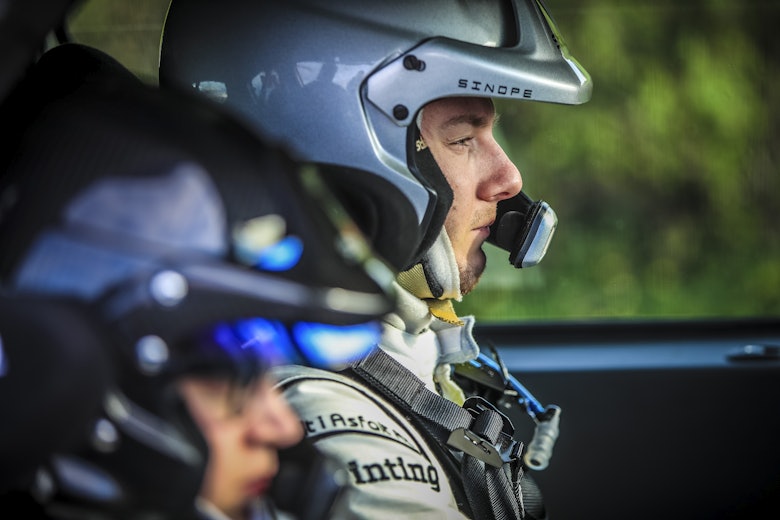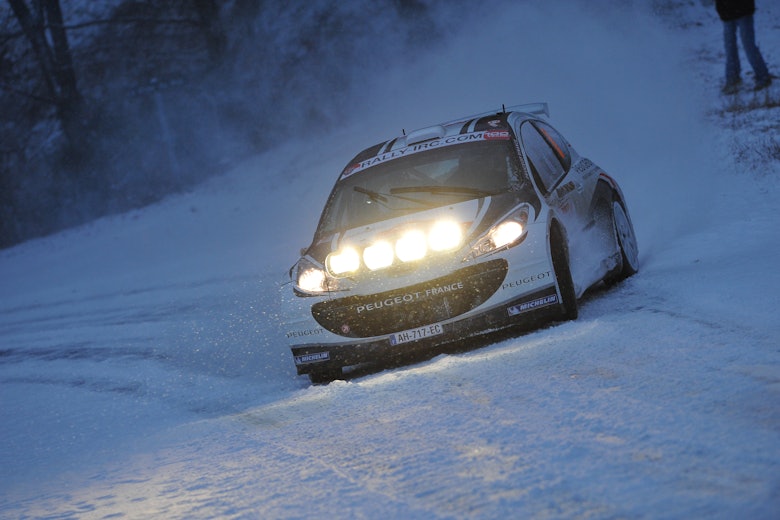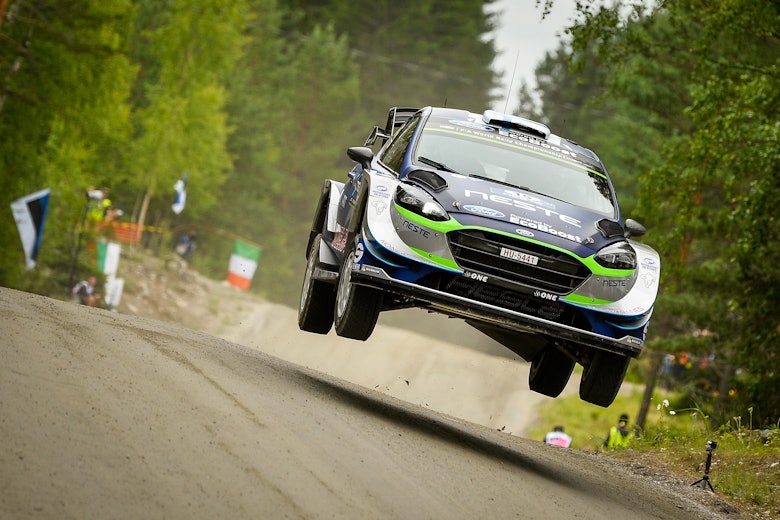If there’s one thing that has become obvious over time, it’s that one does not simply become Mr Dakar overnight. Nor does one acquire the title without one’s fair share of hardship, disappointment and serious hard work.
Stéphane Peterhansel is by far and away the most successful competitor on the Dakar Rally, with 14 victories (six on bikes and eight in cars) and counting, so it’s safe to say that the man has fully deserved his title over the years.
Now embarking on a fresh challenge as part of Audi’s electric off-road program alongside Carlos Sainz and Mattias Ekström, Peterhansel is no spring chicken, but that’s perhaps exactly why he remains at the peak of his powers. The Dakar is an event where experience and age plays a crucial role in who comes out on top.
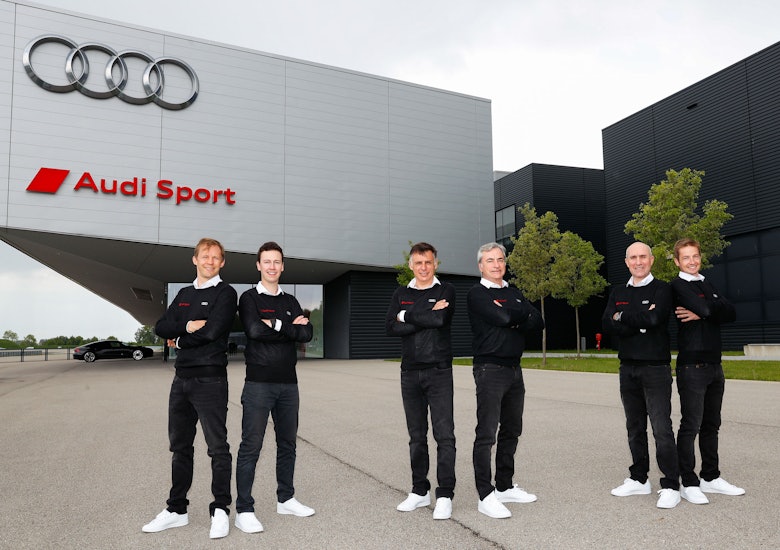
At 55, Peterhansel has experienced almost everything the Dakar can throw at him, having contested the rally first in 1988 after dominating the French Enduro bike championship in the mid-to-late-1980s, and took his first Dakar win three years later aboard a factory Yamaha YZE750T.
Peterhansel’s exposure to motorsport came naturally due to his father, Jean-Pierre, racing as an amateur rally driver and trial biker in the 1970s. Having spent a lot of time in the forests with his father, he quickly caught the racing bug.
“I first became interested in motorsport through my father, who was definitely not a professional but a good amateur [rider],” Peterhansel tells DirtFish.
“So, I was very immersed in motorsport at a young age and started riding small motorbikes at the age of eight years old. Which was, at the time, quite young.
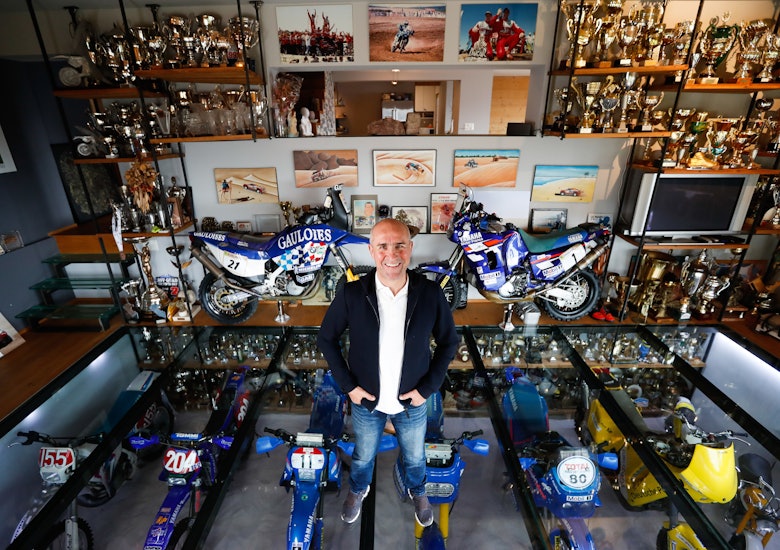
Photo: Audi Sport
“Of course, nowadays, everyone is expected to start very young, but back then it was quite…unusual, let’s say, to start that young.”
With racing in the family and the opportunity to start so young, it may come as a surprise that Peterhansel didn’t go headfirst into competition at the earliest available chance.
Instead, racing suddenly took a backseat for young Peterhansel.
“In the 1970s, skateboarding became very popular,” he says.
“I had a skateboard and loved playing with it. It’s funny because it was actually very good for improving my balance, which was a big help for when I was riding the bike later.
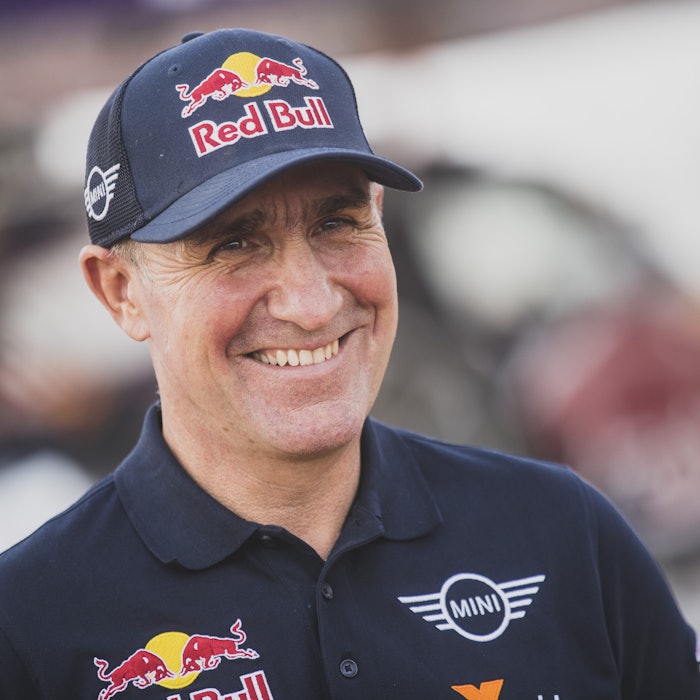
Can you imagine today, a rider using their father’s name? You couldn’t do it. And back then, you couldn’t do it eitherStéphane Peterhansel
“There were quite a lot of similarities between skateboarding and riding a motorbike, like managing the weight distribution, the balance of yourself and momentum.
“It was good fun, I started competing with skateboards and became very good at it. When I finished the school day, I was practicing day and night.”
So good in fact, that Peterhansel went on to become French national skateboarding champion in the slalom, downhill, freestyle and combined disciplines. Such was the impact Peterhansel would later have on French sport, that the town of Vesoul – just a few miles from his birthplace – created the Skatepark Peterhansel.
Peterhansel subsequently reached the fork in the road, whereby his path would either be that of skateboarding or motorbikes. A decision had to be made and, while his passion and success on the skateboard was evident, the true passion was on two wheels and this is where Peterhansel elected to focus his attention.
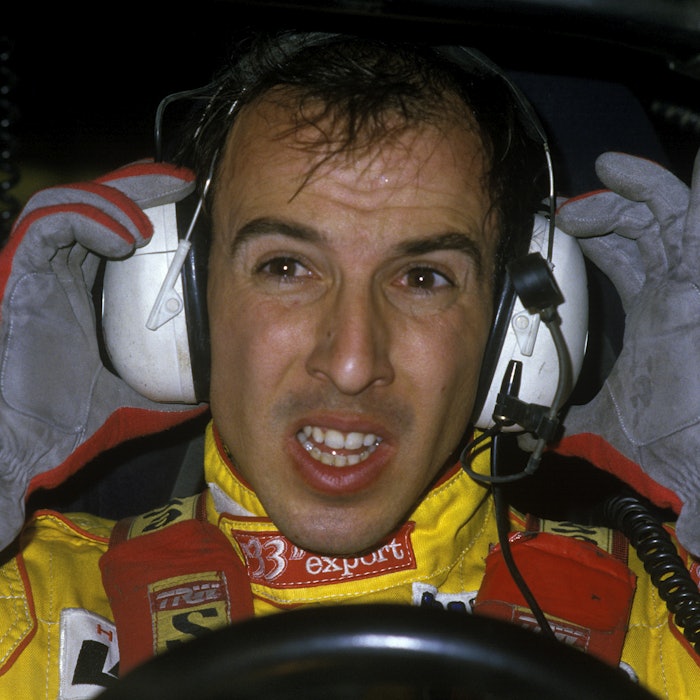
How it started: Didier Auriol
In the first edition of our series, the 1994 World Rally Champion tells us how he rose through the ranks
“I wanted to become a professional rider,” Peterhansel explains. “I had a lot of fun with skateboarding but, at the end of the day, I loved the motorbike more and at that age, you really have to choose what you want to do.
“I had to choose the bikes because they were my first real passion. So, I stopped skateboarding and switched full-time to motorbikes at 14, made my first professional start at 18 and focused on the French Enduro championship which I went on to win three times.”
The key to a professional motorbike career was success, with Peterhansel receiving financial support from father Jean-Pierre on the proviso that, if he didn’t reach his goal of becoming a professional, he would join the family plumbing business.
Although he made his first professional start on a bike at the age of 18, in the French Enduro championship, Peterhansel had actually contested – and won – a number of similar races two years earlier.
You won’t find any record of these victories however, as Peterhansel was in fact disqualified on several occasions after entering under his dad’s name.
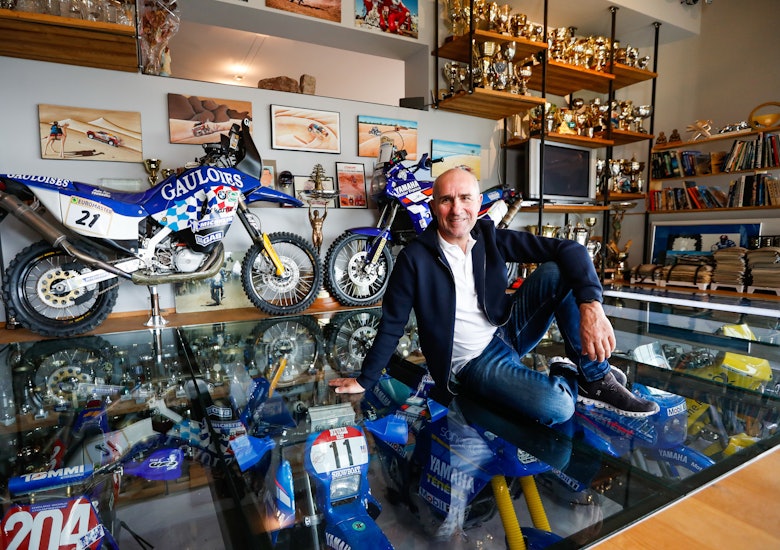
Photo: Audi Sport
Peterhansel still laughs about it today: “Yes, this is another thing which today, you could not get away with, I think!
“When I switched full-time to motorbikes, I focused only on the Endurance championships, because I was interested in the Dakar at the time and knew it was my best route to do the race.
“The problem was that for the Enduros, you would race on private tracks which was OK for all teenagers, but there were stages with public road liaisons for which you needed to have a driver’s license. At 16, I didn’t have my license obviously, so I entered the race under my father’s name.
“Can you imagine today, a rider using their father’s name? You couldn’t do it. And back then, you couldn’t do it either, because they [the organizers] knew that I was using my father’s name, and they disqualified me from the race. So, I didn’t win officially but it was OK for me because before that, I won the race!
“After that, I got my driver’s license and entered the French Endurance championship under my own name and was very successful.”
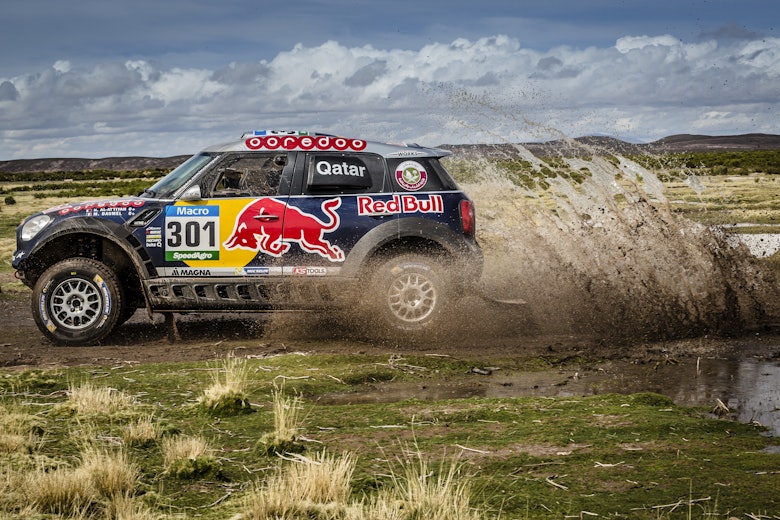
Upon getting his license, Peterhansel not only won the French Enduro National championship at his first attempt in 1984 – riding the Yamaha-affiliated Swedish brand Husqvarna – but then went on to win the Trophée 500 on three separate occasions in 1985, 1986 and 1987, and the Trèfle Lozérien (which he would go on to win a record nine times) as well as contesting several rounds of the world championship.
Having impressed with Husqvarna, Peterhansel was soon picked up by the official Yamaha factory team. Following domestic success, the next step was logical.
“For me, my dream was always to compete on the Dakar and win the Dakar,” he says.
“When I won the French National championship, I knew that the next step was the Dakar. That’s why I started in Enduros; I always knew in the back of my mind that the Dakar was the ultimate.
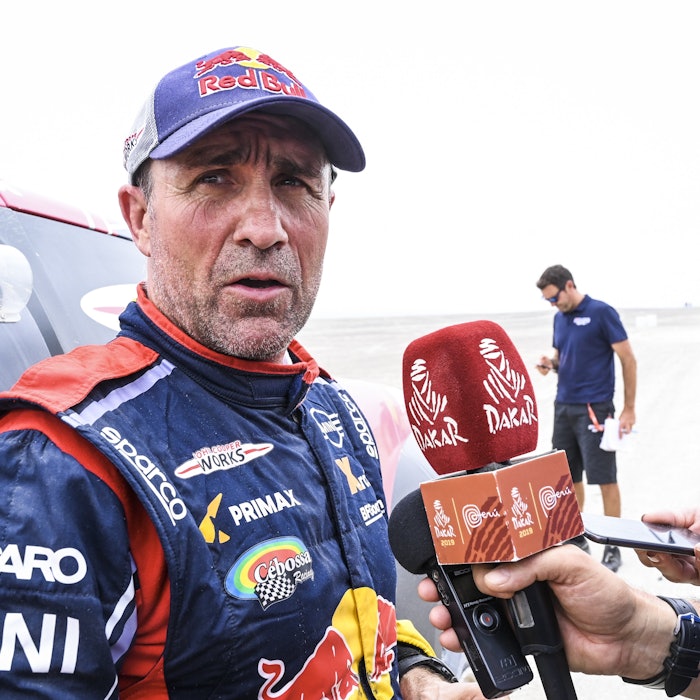
I thought cars would be safer, and again, a new challenge. Because I have always been interested in all motorsportsStéphane Peterhansel
“My first Dakar, in 1988, when I was on the start line, it was an incredible feeling. I felt so excited and so happy. It was a dream come true.”
A stage win on his first outing was followed by a further six in 1989. If just taking the start in 1988 was a dream come true, then what came three years later was manner in heaven.
“Winning my first [Dakar] in 1991, I think was my best, most favorite win,” Peterhansel reveals.
“Once I won the first one, I decided that I needed to win a second and then a third, and so on. Of course, there was the danger there, still is the danger, in the bikes. And I always thought about that, you would pass riders who were injured or worse, and think about it. But you got on with it and the feeling of winning was strong.”
Five victories later, and crucially after beating the previous record set by the great Cyril Neveu, Peterhansel decided to make the shift to the car category; first as a privateer and then as part of the works effort from Mitsubishi Ralliart.
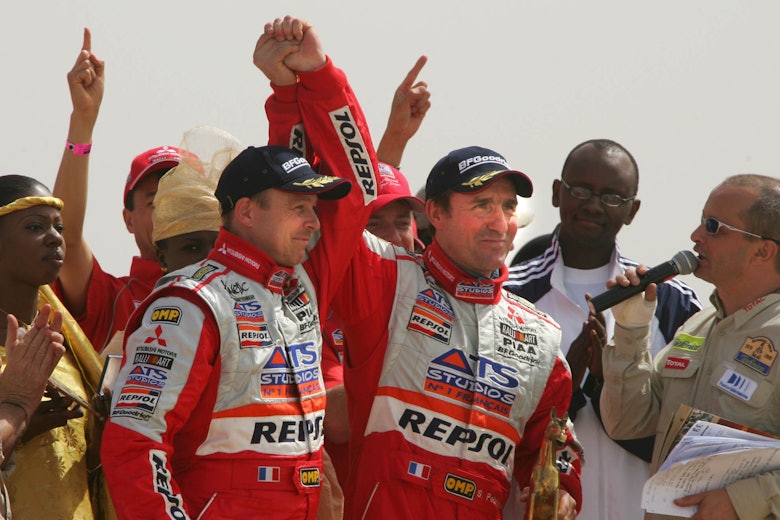
Photo: McKlein Image Database
For Peterhansel, the move from two wheels to four was as much a thirst for a new challenge as it was self-preservation given the ubiquitous dangers of riding the Dakar.
“When I moved to the cars, I decided that it was time to go away from bikes,” explains Peterhansel. “I had won six times, and I was OK. I wasn’t injured, I didn’t badly hurt myself and really after breaking Neveu’s record, there wasn’t anything left for me in bikes.
“I didn’t want to risk hurting myself anymore. So, I thought cars would be safer, and again, a new challenge. Because I have always been interested in all motorsports, from Formula 1, to Le Mans, rally, everything.
“I have been interested since a long time about the cars, about how they are to drive and the challenges of them.”
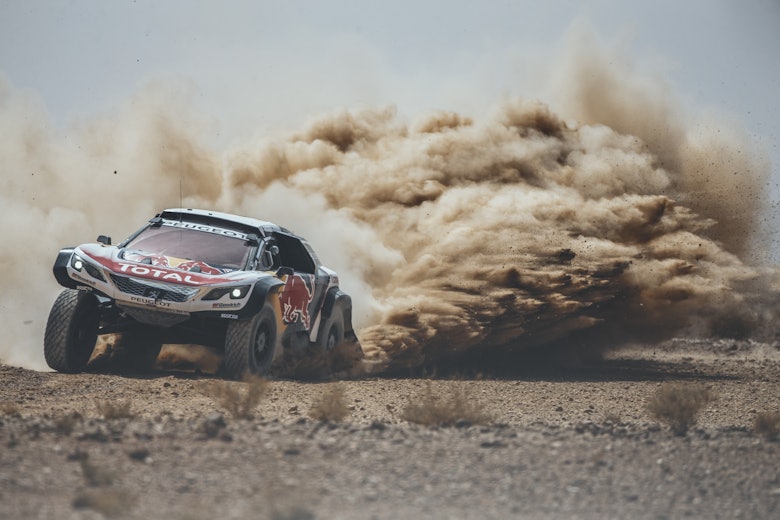
Photo: Red Bull Content Pool
A year after his car debut, Peterhansel finished second on the 2000 edition of the Dakar, which was notable for starting in Dakar and finishing next to the Pyramids in Egypt, but it was another four years before his first overall victory for Mitsubishi in 2004.
He repeated that feat in 2005, with a third coming in 2007 before switching to Mini in 2012. Another two Dakars came with the works entry before switching to another factory T1 stable with Peugeot.
Throughout his career, Peterhansel has been a formidable threat in factory-run efforts, something he says stems back to his early motorbike days.
“I was very lucky to be involved with a lot of factory teams,” he says. “With a factory team, you have a much better chance of doing well, because they know everything and they have a lot more resources, knowledge, experience and support for you.
“It was the same with Yamaha, with Mitsubishi, Mini and Peugeot: they are all professional and I had a lot of good fun with them. Of course, because of the victories but always just being part of a big team with the same goal.”
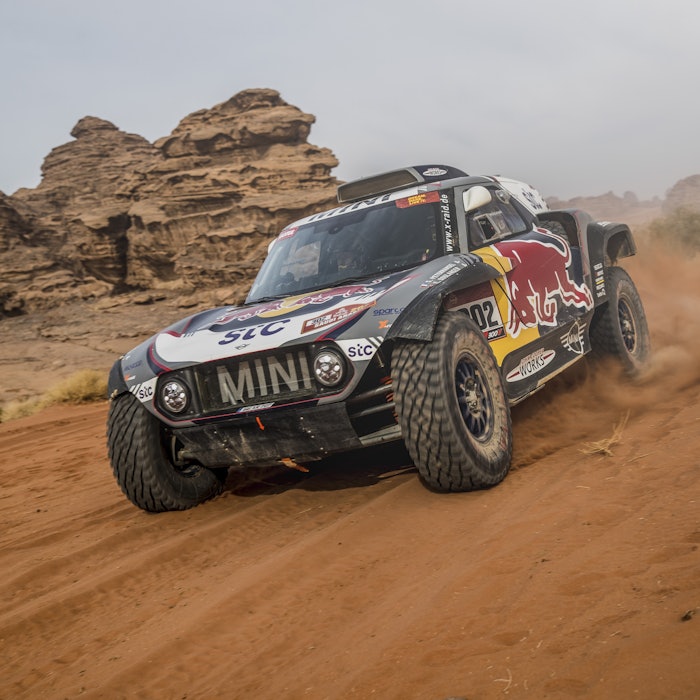
Peterhansel seals record-extending Dakar win
Read all about how Peterhansel won his 14th Dakar Rally earlier this year
But what about his latest factory team, Audi, run by Q Motorsport and his most recent boss at Mini, Sven Quandt?
“I am very proud to be with Audi, it’s a new challenge and one which I am looking forward to a lot,” says Peterhansel.
“With Sven, I have known him since a long time. We work together very well, and he is very experienced. Then there’s Carlos who I have been team-mates with for a few years now, he is clearly still very fast too, even though he is older than me!
“And Mattias has been part of the Audi family for years now and he is also fast, very experienced and focused on the Dakar, which makes the team really a dream team.”
From France’s answer to Tony Hawke to a Dakar Rally legend, Peterhansel’s career has shown no signs of slowing down. Talk of retirement is ushered away with a typical French shrug of the shoulders.
His only answer is: “I want to win at least once with Audi, and then we will see!”
It would come as no surprise if Mr Dakar stuck around for a good while yet.



